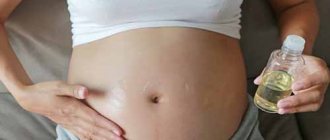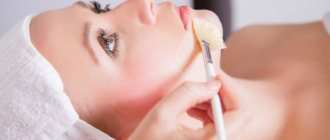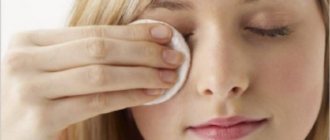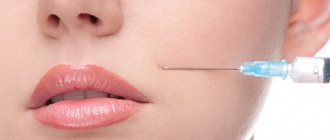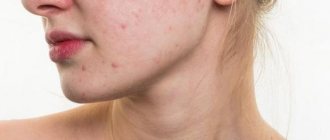Recently, the journal Expert Opinion On Drug Safety published an article by gynecologists from Taiwan who reviewed the use of BTA in pregnant women, and the doses of botulinum toxin were therapeutic and used in patients to treat neurological diseases1.
All of these conditions were successfully treated both before and during pregnancy with BTA injections, which allowed doctors to monitor the effect of botulinum toxin on the course of pregnancy and the effect on the fetus. Scientists say BTA injections have shown relative safety during pregnancy.
Below we provide excerpts from the material.
Botulinum toxin in the systemic circulation
To begin with, we should remember: in order to act on the myometrium or reach the placenta and negatively affect the fetus, the active substance must enter the systemic circulation.
Some reports indicated that, at high doses, BTA could diffuse from facial muscle tissue into the arm, as measured by single-fiber electromyography (EMG)2, 3. However, this effect appeared to be subclinical because no muscle weakness was detected in the affected individuals. If the dose of the drug did not exceed the recommended one, then during intramuscular injection BTA did not enter the systemic circulation4.
BTA is classified by the FDA as a Category C drug, which means that animal studies have shown adverse effects of the drug on the fetus and there have been no adequate studies in pregnant women, but the potential benefits associated with the use of this drug in pregnant women may justify its use despite existing risk.
In addition, studies have shown that molecules larger than 500 Daltons cannot cross the placenta5. The molecular weight of BTA exceeds 500 D, so BTA is unlikely to cross the placental barrier and is unlikely to be present in fetal blood.
To date, animal studies have found no evidence for transmission of toxins to the fetus. In rabbits, BTA was not detected in the placenta or in embryos when high (lethal) doses of the toxin were administered intravenously. Malformations and abortion were recorded only if rabbits received high-dose injections of BTA daily; conversely, pregnant mice treated with BTA did not show similar adverse outcomes6.
The effect of Botox on pregnancy: side effects
Other side effects are rare but can be serious, such as muscle weakness in other areas of the body and problems breathing and swallowing. However, if you had the injection just before you conceived or before you realized you were pregnant in the first trimester, the risk of harm to your baby is low. One injection should not contain enough Botox to circulate around the body and reach the fetus. Just don't do any further procedures until the end of your pregnancy.
The use of Botox should also be avoided if we are talking about the lactation period. Like many medications, it can pass into breast milk and reach the baby. Many women who usually have Botox feel that it is not necessary while they are pregnant. As the expectant mother's body retains more water during pregnancy, it can dislodge any lines and crow's feet that may form.
Despite little research to determine what effect Botox-killer may have on pregnant women and unborn children, obstetricians and cosmetic surgeons overwhelmingly say they do not advise pregnant patients to get injections of the popular drug.
The effect of Botox on pregnancy: the opinion of a cosmetologist
Dystonia
Dystonia is a syndrome in which there is a constant spasmodic contraction of muscles, spasms are often unpredictable, change the normal position of the body, can be chronic and cause significant discomfort, pain and disability.
Article 1 examined the use of BTA in the treatment of idiopathic torsion dystonia, oromandibular dystonia, and spastic dystonia (Table 1).
As a rule, the disease begins before the onset of reproductive age and persists throughout life. Common in pregnant women. Currently, BTA injections are the preferred treatment option. Moreover, in 10% of patients the disease began suddenly in connection with pregnancy and childbirth. Ankola showed (a study of 350 patients) that pregnancy or pregnancy-related hormonal changes may be a risk factor for the disease7. Morgan found that in a survey of 396 doctors, nine pregnant women received a BTA injection during pregnancy. One patient had a spontaneous abortion, but the other eight patients gave birth to healthy children8. Blitzer11 summarized the data of 1300 patients with dystonias such as adductor and abductor dysphonia, and over 24 years, according to his data, the effectiveness of BTA was 91.2% and 70.3%.
Table 1.
Use of BTA for the treatment of dystonia during pregnancy (according to Wu Li, Min Tang1)
| Study | Number of BTA injections | Dosage/Duration of treatment | Result |
| Newman, 20049 | 3 | 15 weeks / 200 units. 21 weeks / 100 units. 32 weeks / 300 units | BTA improved the symptoms, which recurred approximately every 3–4 months. Over the next 9 years, the patient became pregnant three times and received BTA several times during each pregnancy. The injections gave good results in all three pregnancies, the patient gave birth to healthy children |
| Aranda et al.10 | 1 time in the second and third trimesters | The injection site and dose were identical to those used before pregnancy: 40 IU into the left sternomastoid muscle, 150 IU, and an additional 60 IU divided between the trapezius and right elevator scapula muscles. The total dose during pregnancy is 500 IU. | At the 40th week, the patient gave birth to a healthy baby (weight 3400 g). |
| Morgan8 | _ | _ | The patient experienced relief of symptoms and gave birth to a healthy baby20. |
Advice from cosmetologists and gynecologists
What should an expectant mother do to ensure maximum safety for newborns:
- maintain a balanced diet;
- use special vitamin complexes;
- use natural masks with the addition of olive oil, which increases skin elasticity and helps eliminate stretch marks.
- massage problem areas.
Women need to think about the effects of Botox, especially if they are planning a pregnancy or are pregnant. After all, even the use of ordinary drops for the common cold requires a detailed study of the instructions for use. In the case of the drug in question, responsibility for the consequences lies almost entirely with the patient, since injections are given with prior consent.
Strabismus
Deviation of the visual axes from the direction towards the object in question, in which the coordinated work of the eyes is disrupted and it becomes difficult for both eyes to fixate on the object of vision. BTA is considered an alternative to surgery.
Table 2.
| Study | Number of BTA injections | Dosage/Duration of treatment | Result |
| Morgan, 20048 | Two patients with strabismus received BTA during pregnancy | 1.25 to 300 IU | The therapeutic effect did not cause complications or fetal abnormalities |
| Lee Yim12 | 17 year old woman. The drug was administered before the patient knew she was pregnant | 2.5 IU | A healthy baby was born |
The effect of the drug on the health of the expectant mother
During pregnancy, the female body is very vulnerable and susceptible to the development of various conditions. Many expectant mothers suffer from toxicosis, which can worsen if Botox is used during pregnancy. In addition, other undesirable complications may appear: allergies, dizziness, diarrhea and vomiting, which is dangerous during pregnancy and can cause miscarriage.
Botox during pregnancy very often provokes the development of weakness and general malaise. Therefore, experts do not recommend injections during pregnancy.
Esophageal achalasia
Functional obstruction of the esophagus. Characterized by loss of lower esophageal sphincter (LES) activity and esophageal motility; the main symptoms are dysphagia, chest pain and reflux.
Treatment options include diet, calcium channel blockers, and Heller myotomy. BTA can be injected locally into the stomach area. The procedure does not require deep anesthesia, and can relax the LES and relieve esophageal obstruction.
Table 3.
| Study | Number of BTA injections | Dosage/Duration of treatment | Result |
| Wataganara et al., 200913 | From 18th week | 80 U BTA | A healthy infant was born at 36 weeks' gestation and no swallowing problems were noted until 6 weeks postpartum. |
| Hooft 201514. | BTA at 14 weeks of pregnancy | 100U | Healthy baby |
| Holliday 201615 | BTA at 31 + 3 weeks of pregnancy | – | Eclampsia and childbirth at 37 + 4 weeks of pregnancy |
When breastfeeding
The period of breastfeeding is a rather responsible process, which also directly depends on the mother. Through breast milk, a baby receives all the beneficial and unhealthy components transmitted by the mother’s body.
It is worth noting that during breastfeeding, the female body succumbs to various diseases and loses immunity, so certain bacteria can pass into the child’s body along with mother’s milk.
During breastfeeding, hair continues to fall out, causing a lot of discomfort. Since Botox is carried out locally, without implying the introduction of certain substances under the skin, at this stage it will not have any negative effects on the child.
Chronic pelvic pain (CPP)
A common syndrome with various causes: the main and only symptom is pain, sometimes accompanied by defecation disorders. In addition to daily pain, patients often complain of dyspareunia and dysmenorrhea. In women, pain was significantly reduced after BTA injections.
Table 4.
| Study | Number of BTA injections | Dosage/Duration of treatment | Result |
| Abbott 200616 | 30 | 80 IU | Two women became pregnant 4 and 5 months after the injection; One woman (41 years old; complex medical history) had an elective caesarean section at 40 weeks and the baby had a ventricular septal defect that required surgical correction. However, it is unclear whether it was caused by BTA administration. |
| Abbott 200917 | Two cases during pregnancy | – | Both mothers had good results. |
About the procedure
Botox for hair is a procedure that involves restoring and strengthening the structure of the strands. There is a misconception that the procedure uses botulinum toxin, which is injected under the skin to smooth out wrinkles. Botulinum toxin in large quantities has a destructive effect on the body. The Botox effect is achieved due to the presence of intra-silane in the composition. This substance is able to penetrate into the deep layers of the hair and act on it from the inside.
The procedure got its name due to the ability of the active ingredients to transport nutrients to the hair root. The formula for the product developed by the Arabs. They brought Botox for hair to the international market.
The procedure is aimed at improving the health of hair scales. It can be done both in the salon and at home . The following effects are achieved with Botox:
- giving a glossy shine;
- smoothing strands;
- elimination of split ends;
- strengthening the hair structure;
- protection from harmful effects;
- increase in volume.
Hair restoration is carried out in several stages. Deep cleansing shampoos are used for washing. After washing, a special solution . The next step is to put a cap on your head, which provides a greenhouse effect. Additionally, the master applies heat using a hairdryer.
After about 20 minutes, the hair is washed without using aggressive products. The last step is to apply Botox to the scalp using massage movements. After this, the hair is dried and, if necessary, styled.
The effect is secured by proper hair care. Taking multivitamins and using nourishing masks . It is advisable to provide protection from exposure to sunlight and low temperatures.
ON A NOTE! On light hair, cosmetics with intra-silane neutralize yellowness.
Migraine
Some migraine medications are considered unsafe for pregnant women18.
In 2000, Binder et al were the first to report that BTA was successfully used in patients with headache19. In a meta-analysis of 17 studies involving 3646 patients with chronic migraine, Brula et al found that BTA significantly reduced chronic migraine symptoms after 3 months of treatment compared with placebo; therefore, BTA was considered safe and well tolerated20.
Reasons for bans on injections for pregnant women
The arguments of careless cosmetologists cannot serve as an incentive to action. No one can give a 100% guarantee that there will be no effect on the fetus. Let's look at the facts that warn against injecting Botox during pregnancy.
It is also important to have a proper diet and light exercise. As for bathing, it is worth using them because they are relaxing, but remember that the water in the bath was warm and not hot, and the entire bath did not exceed a quarter of an hour. Keep in mind that no matter your skin type or changes in your body, the basic principle is and will always be to hydrate your skin!
Preparation for intimate hygiene. Their role is not only soft washing, but also a moisturizing, antibacterial and pH-correcting effect. It is good to choose those who have received a positive recommendation from independent scientific circles, that is, institutes, societies in areas such as gynecology, toxicology or dermatology.
The experiments were carried out on rats. Pregnant females were injected with Botox. Experiment results:
- birth of babies with pathologies;
- skeletal growth retardation, bone fragility;
- newborns weigh less than normal;
- high percentage of miscarriages;
- some females give birth prematurely.
Of course, there are big differences between humans and animals. But conducting similar studies on women is not ethical. The developers of the drug adhere to this position. No sane expectant mother could agree to such an adventure. Suspected adverse effects on the fetus:
Cosmetics ingredients for pregnant women
You should avoid them or at least limit their use;
- synthetic antioxidants - can cause allergies; in high concentrations they can be toxic and carcinogenic. In short, cosmetics free of these ingredients are safer, less allergenic and less irritating to the skin. One thing is certain after childbirth, when you need to give your body and body time to heal independently naturally and also return to hormonal balance. In fact, after just a few months, we can apply more serious treatments to the face and body, such as almond peels, glycolic peels, microdermabrasion or mesotherapy. After about 6 months, it is also worth trying to combat stretch marks, such as laser, peeling, carotherapy - of course, this will require several visits, and there is no guarantee of results.
- developmental delay;
- diseases of the cardiovascular system;
- neuralgic disorders.
The poor outcome of Botox injections during pregnancy has been repeatedly confirmed in practice. More than 40 women around the world have paid for their carelessness with the health of their children. For example, one of them gave birth to a child with hearing and vision defects. Many cases are on the conscience of cosmetologists who did not warn their clients.
Some tips for future cosmetologists and cosmetologists
If a woman is breastfeeding, then a significant part of the treatment is still contraindicated for her, for example, Botox.
Before all treatments where pregnancy is a contraindication, ask each client when questioning whether she is pregnant or not, this is extremely important because the client may not be aware that certain procedures or cosmetics cannot be used in that particular condition. Another question is that during pregnancy, all cosmetic experiments are not recommended, because the hormonal revolution in the body affects the skin - its reactions can be unpredictable. Having a healthy baby should remain a priority.
Moreover, there is no guarantee of the desired rejuvenation result. During pregnancy, hormonal changes occur in the body. This means that the risk of side effects is significantly higher.
Complication statistics
Wu Li, Min Tang1's findings on complications showed that rates of spontaneous abortion and fetal malformations in pregnant women treated with BTA were similar to those reported for the general population.
Tan reported 28 cases occurring before 2013 in patients who received BTA during pregnancy; including 25 normal births, 1 therapeutic abortion and 2 spontaneous abortions21.
In 2020, Brin et al. reported results in pregnant women who had received local injections of BTA within the previous 24 years. Of the 137 births (139 fetuses), 110 (79.1%) were live births, 29 (20.9%) were fetal loss (21 spontaneous abortions) and 8 abortions22. Among the live births, 106 (96.4%) were normal, only 4 patients had a poor outcome, two had minor fetal malformations and one congenital complication; the overall incidence of fetal malformations was 2.7%. They may not have been related to BTA treatment.
How do beauty injections work?
Botox is very popular among women. It helps restore youth. The effect is achieved by administering an injection containing a small concentration of botulinum toxin, produced from botulism bacteria. This substance blocks the nerve endings of the muscles, due to which wrinkles are smoothed out without surgical intervention. After 3-5 months, the effect of the injection ends. After this period, many women turn to a cosmetologist.
The main purpose of Botox is to combat various diseases. It is used for spasm of the eyelids or half of the face, cervical dystonia, convulsive curvature of the neck, excessive sweating from the armpits and other pathologies. This injection is administered for dyshidrosis. Its main goal is to cause paralysis of the muscles, the improper functioning of which leads to the development of the disease.
It has been proven that beauty injections can cause malfunctions in the body. So, scientists conducted a study: 320 people were given Botox injections. 4 of them developed a migraine that did not go away during the day and lasted from 2 to 4 weeks. Thus, the administration of botulinum toxin is fraught with side effects. Moreover, most women who rejuvenate themselves with injections experience a mild and short-lived headache.
If such consequences are found in ordinary people, then what about pregnant women? During gestation, the load on the body increases, which is fraught with a more acute reaction to certain drugs. An expectant mother who has received a Botox injection may experience pathologies such as allergies, dizziness, digestive problems, and shortness of breath. The fetus can also suffer from beauty injections.
Botulinum poisoning
There have been cases in the literature where high doses of BTA could cause symptoms of systemic botulinum poisoning.
However, a report by Brin et al. (2016) states that clinical botulism has no adverse effects associated with pregnancy or the fetus22. Badell studied maternal and fetal outcomes associated with botulinum poisoning in 16 women during pregnancy (11 cases in late pregnancy) and 1 woman after injection23. Although the pregnant women showed signs of poisoning, all babies were born healthy and only six patients experienced premature birth. Newborn blood tests did not show the presence of BTA in the systemic circulation; these findings also supported the hypothesis that BTA does not enter the fetal circulation24,25.
Dysport injections: indications and contraindications
Before deciding to carry out rejuvenation procedures using beauty injections with drugs such as Dysport, Botox, you should consult a doctor and become familiar with the indications and contraindications.
In cosmetology “BeautyLab”, In Krasnodar you can get detailed advice from highly qualified specialists. They will help you make a choice, or offer alternative rejuvenation options, instead of introducing Dysport before pregnancy.
They will also cover in detail a number of issues:
- Is it possible to inject Dysport if planning a pregnancy is planned in the near future;
- Is it possible to use Dysport during pregnancy?
- Is it permissible to administer Dysport during lactation, and at what time is it better?
The main indications for the procedure may be:
- the first signs of age-related changes;
- vertical wrinkles between the eyebrows;
- the presence of crow's feet in the corners of the eyes;
- deep wrinkles in the forehead, on the bridge of the nose and other changes that the cosmetologist will suggest.
The cosmetic procedure has the following contraindications:
- age restrictions of patients (under 25, or over 65 years);
- infectious, chronic diseases in the acute stage (HIV infection);
- recently after surgery, stroke, heart attack;
- period of breastfeeding, pregnancy;
- blood diseases, poor clotting;
- taking antibiotics;
- allergic reactions, individual intolerance to components;
- neuroses, stressful conditions.
Every woman at any age and condition cannot be indifferent to her appearance when wrinkles appear, so expectant mothers still wonder whether it is possible to inject Dysport during pregnancy, and what effect of Dysport during breastfeeding can manifest itself on the body of mother and baby?
